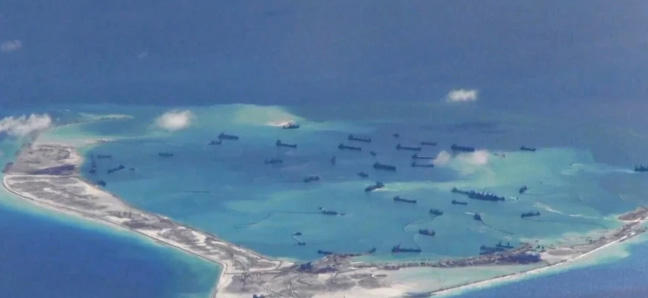China is working to restore the ecosystem of coral reefs in the disputed South China Sea, the Ministry of Natural Resources said, amid concerns that its land reclamation operations have damaged the environment, Trend reports referring to South China Morning Post.
Facilities to protect and recover coral were installed on Fiery Cross, Subi and Mischief reefs, the three biggest of China’s seven artificial islands in the Spratly group, and operations began at the start of the year, the ministry said.
On Tuesday, its website announced surveys to identify more areas where coral would be protected and restored involving a “natural recovery” approach to help the reefs repair themselves complemented by artificial methods, and techniques developed especially for the Spratlys.
In July 2016, an international tribunal ruled that China’s land reclamation and construction of artificial islands “had caused severe harm to the coral reef environment”.
The tribunal said China had “violated its obligation to preserve and protect fragile ecosystems and the habitat of depleted, threatened, or endangered species” and “inflicted irreparable harm on the marine environment”.
Beijing dismissed the ruling and said its construction was a “green project”.
In 2015, China’s State Oceanic Administration said construction did not alter the health of the Spratly Islands’ ecosystem, but it suggested planting, repairing and transplanting corals after construction.
China carried out a land reclamation programme in the Spratlys between 2013 and 2016 that expanded reefs – some of which at first were submerged rocks at high tide – into islands as large as 558 hectares (1,379 acres).
Ownership of the Spratlys is contested by Vietnam, the Philippines, Malaysia, Brunei and Taiwan, and the Chinese construction project sparked international criticism over environmental damage even before the tribunal ruled.
Constructor vessels shredded the coral, sucked up the debris and blew it onto land. The biggest of these ships was the dredger Tianjing that shifted about 4,500 cubic metres of materials every hour, enough to nearly fill two Olympic-size swimming pools.
China’s foreign ministry praised this as a simulation of “the natural process of sea storms blowing away and moving biological scraps which gradually evolve into oasis on the sea”.
But it was criticised by marine biologists including John McManus of the University of Miami – the chairman of a five-year study of a US government coral reef conservation programme – who in 2016 said the process “kills basically everything” living around coral reefs and lagoons.
Beijing also claimed in 2015 and 2016 that coral ecology was damaged by “natural causes and overfishing” long before construction began.
On Tuesday, the Ministry of Natural Resources said ecological protection and restoration was a mission.
“To protect the coral ecological system is the key to ensuring the ecological security of the Spratlys as well as the entire South China Sea,” it said.






